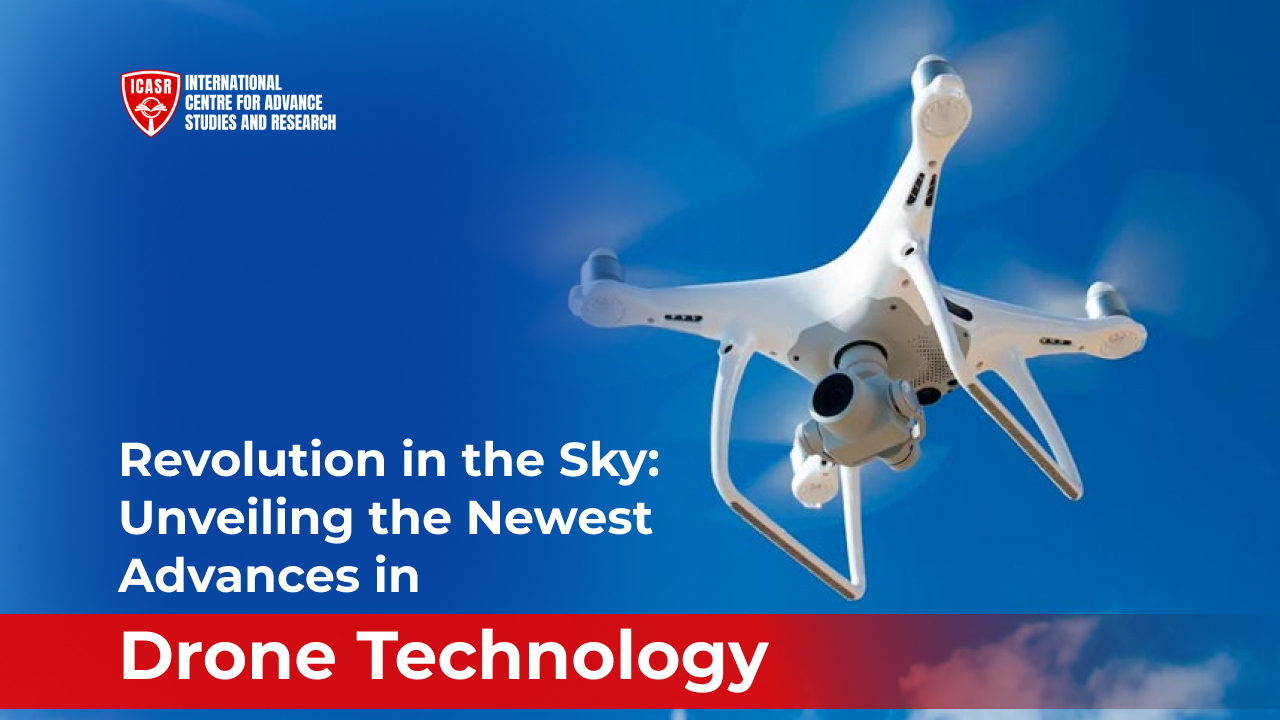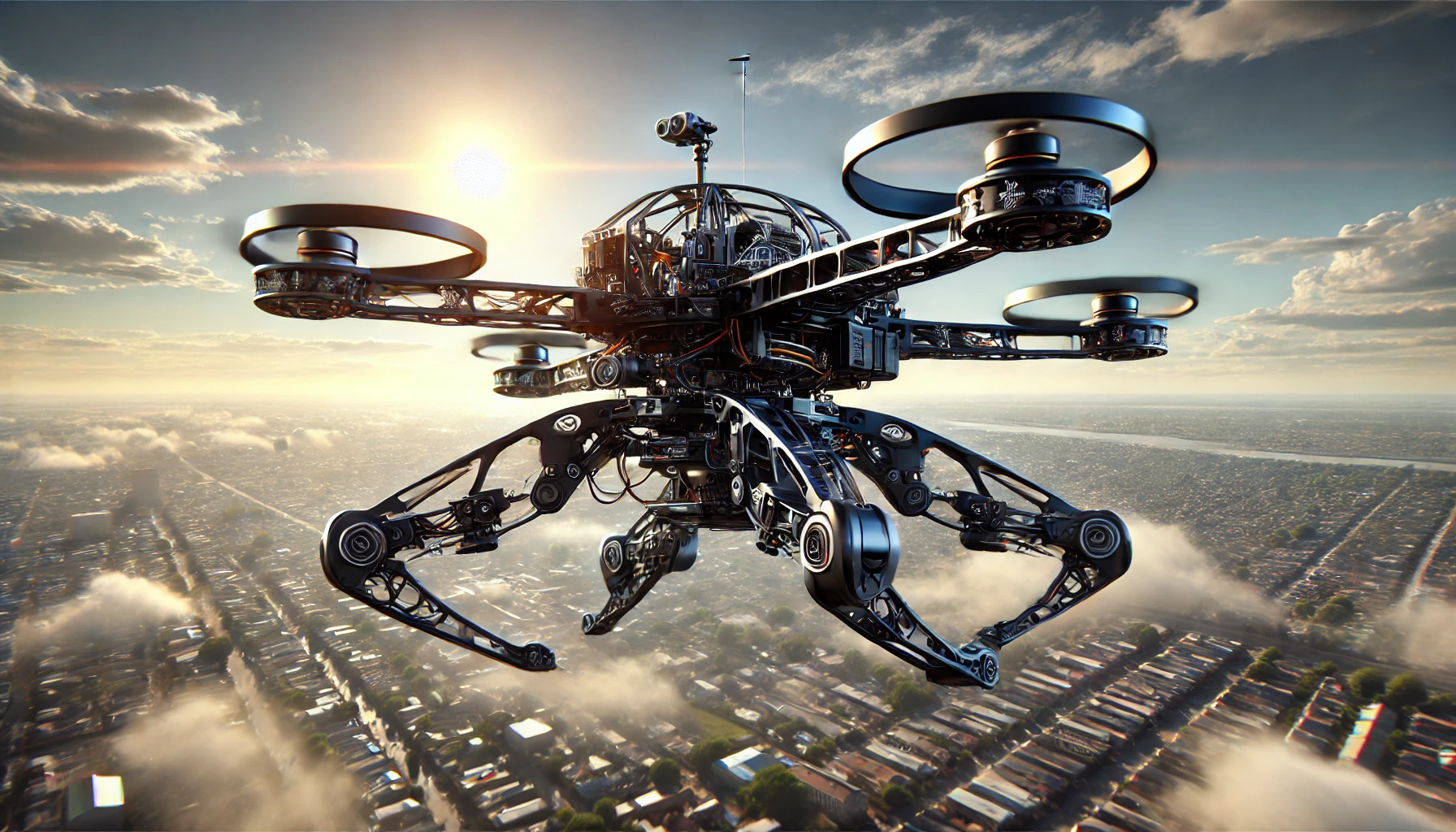Drones have developed significantly beyond their early military applications to transform sectors and revolutionize the way we engage with the environment. This blog examines some of the latest drone technologies that are helping to move "lines" in terms of abilities.
Taking Flight with 5G Drone Connectivity:
Picture drones that move at a steady pace while providing top-quality video, and finding their way to ease in rigid landscapes. In the modern world, such technology can be achieved through the application of 5G. Comparatively, 5G has very quick data transfer speeds, reduced reaction time and improved network flexibility as opposed to the earlier versions. So, in what ways does 5G contribute to improved drone efficiency?
- Real-time Data Transmission: Via 5G, drones can constantly send high-resolution images, and video recordings with minimal time delay aspect which allows immediate monitoring and decision-making in search and rescue operations or when addressing disasters.
- Ultra-Precise Navigation: 5G minimum time delay enables close to immediate interaction between drones and their ground-based control system which leads to improved flight path coordination both for autonomous and manual flights.
- Better Traffic Control: Thanks to 5G drone connectivity, there can be many drones flying at the same time in the same airspace without crashing into each other or getting off course.
High-Capacity Drone Batteries:
Battery life was a big limitation of previous drones since they lasted for short periods meaning that they lasted for short period meaning they couldn't fly very far or carry out serious functions. Nevertheless, this challenge is being solved through improved battery technology where high-capacity drone batteries make it possible for them to remain airborne over significantly extended periods, hence covering greater distances, as well as undertaking tasks which were initially unachievable.
The increased flight time mainly depends on high-capacity batteries that are used on drones. These drones are essential for conducting pipeline, wind far and power line inspections through air where large area coverage is significant. Enhanced payload capacity becomes possible due to extended duration periods of flying which allow for more weight to be lifted while flying. A case in point is drone delivery services which need drones capable of carrying heavy packages across ever-greater distances. Battery innovations not only concentrate on storage space but effectiveness as well. The energy effectiveness of drones is also increasing leading to longer flight durations and lowering operational expenses.
Sensor Technologies for Enhanced Capabilities:
Drones are commonly furnished with cutting-edge sensing technology that enables them to sense the environment in ways that are beyond human perception. Some of the capabilities are as below:
- LiDAR (Light Detection and Ranging): It works by emitting laser pulses all around hence providing a high-resolution 3D of the immediate surrounding areas. This technique is essential for self-navigation purposes (Automation), avoidance of barriers and accurate 3D models for things and terrains.
- Thermal Imaging Cameras let these drones conduct tasks in darkness since they recognize temperatures usually hidden under darkness, as well as distinctions in the temperature of objects viewed. these are applicable in searching for lost persons, fire control by firefighters, and inspection on the transmission lines.
- Hyperspectral Cameras are being used to capture images across a broader spectrum of transmission lines. Spectrum distinguishes hyperspectral cameras from conventional cameras in that they enable the differentiation of various materials even health.
The Rise of the Machines: Autonomous Drone Swarms
Think about a combined effort of drones operating independently and jointly to reach the same end; once a far-fetched idea that is now achievable due to progress in artificial Intelligence (AI) and Machine Learning (ML) technologies. There are numerous possible applications for autonomous drone swarms, ranging from these examples:
- Search and Rescue Missions involve the use of drones with thermal imaging cameras that are effective in scouting missing persons in large regions and thereby enhancing the success rate of such a mission.
- Precision Agriculture implies that swarms can assist farmers in monitoring their crop health status, locating pest-infested areas and applying pesticides with great accuracy saving both money, time and ensuring sustainability in farming practice.
- Swarms can autonomously inspect bridges, buildings and other infrastructure for damages, a move that can streamline the inspection process while at the same time lowering risks for human inspectors during the inspection processes.
The ethical issues that come with developing autonomous drone swarms are many, including concerns about privacy and the necessity for strong safety measures. Nonetheless, there is huge potential for the sector to be transformed if the right steps are taken to develop or implement these swarms in a responsible way.
What are the Latest Uses of Drones in Commercial and Emergency Response Scenarios:
Various sectors are being quickly transformed by drones, with new uses appearing in commercial as well as emergency response cases:
- Delivery Services: Companies are exploring the use of drones for delivering packages, particularly in remote areas or congested urban environments, as part of delivery services.
- Infrastructure Inspection: There are numerous ways for drones to be used in infrastructure inspection. For instance, they can use drones to inspect pipelines or other infrastructure objects and check their condition without putting human life at risk.
- Construction: Drone can aid in investigating the extent of fire damage, find hot-spot and give water or fire retardant to areas hard to reach by ground crew.
- Disaster Response: The drone shall ensure that the supply of goods reaches the people amid natural calamities such as earthquakes and floods.
In the future, you will be surprised by new remarkable roles that will be played by machines like these in the air. The period we are in is one where drones are being used more than ever before and this has led to several developments and breakthroughs in the sector thereby enhancing their growth rates. 5G drone connectivity, high-powered batteries, automation and modern sensors are a few of the things that can be used on a drone as suggested by its investors, indicating how much potential there is in what they plan to do with these devices coming our way soon with an intention of accomplishing so much, but it becomes hard due its complexity sometimes. Drones are set to be transformative across industries in addition to assisting with emergency response operations. As long as these technologies advance, drones have endless potential.


